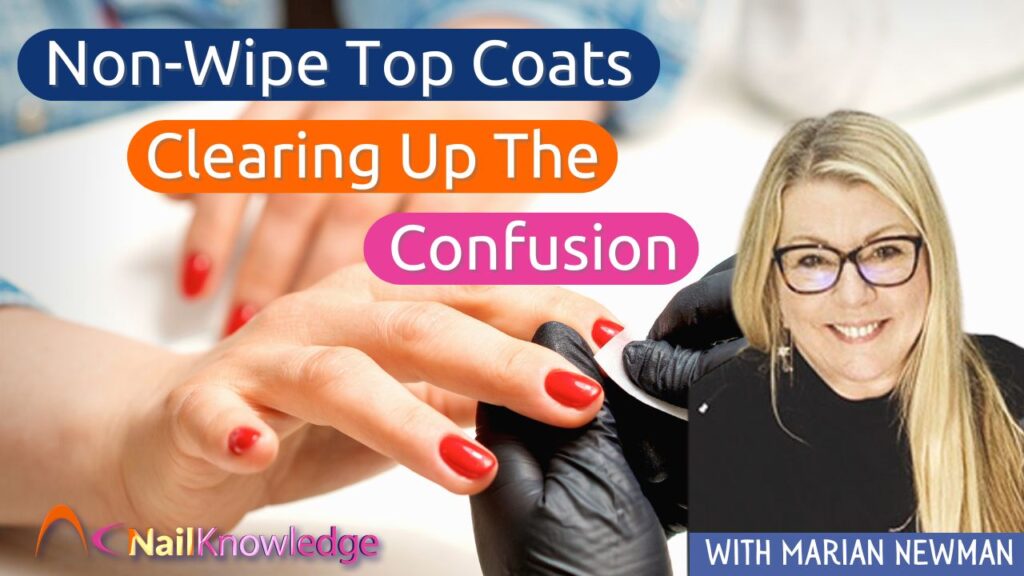Esta pregunta nos la hacen a menudo: “Do non-wipe top coats really need to be wiped?” With so much conflicting information out there, it’s understandable to feel unsure. Safety is essential, and knowing the facts helps protect both you and your clients from potential allergies or irritation.
To help clear things up, here’s a detailed breakdown of non-wipe top coats, why some people still choose to wipe, and how to use them safely and effectively.
¿Qué es un barniz de acabado que no se limpia?
- Esmaltes de acabado que no se limpian are designed to cure completely without leaving a sticky or tacky inhibition layer after being cured under a UV or LED lamp.
- Esto significa, en teoría no need to wipe the nail with alcohol or any cleanser after curing.
Por qué algunas personas podrían seguir limpiándose
- Malentendido: Some people may be used to traditional top coats (which do leave an inhibition layer) and automatically wipe without realizing it’s unnecessary.
- Preferencia de brillo o textura: En ocasiones, la gente cree que pasar un paño mejora el brillo o el tacto del top coat. Sin embargo, en el caso de los auténticos top coats que no se limpian, este paso es innecesario.
- Cuestiones de seguridad: Some technicians worry that uncured product might be left behind, causing allergies or contact dermatitis. However, if the product cures correctly under a calibrated UV/LED lamp, it should be fully set, and no harmful substances should remain. If you are worried about the incidences of allergies then continue to wipe over the cured coating just in case there is any uncured material. Remember to wipe from base to the tip each time and start with little finger
Prácticas recomendadas para utilizar con seguridad un top coat sin paño
- Siga las instrucciones del fabricante: Ensure you are using a top coat specifically formulated as a non-wipe product. Always trust the manufacturer’s guidelines and use the correct curing times and lamps they recommend.
- Curado adecuado: Ensure your UV/LED lamp is suitable (check wattage and cure times). An under-cured product can lead to uncured monomers causing skin irritation or allergies.
- Compruebe la superficie: After curing, if the nail feels fully smooth and dry, there’s no need to wipe. If it feels tacky, there may be an issue with the curing process, or it might not be a true non-wipe formula.
- Pruebe regularmente su lámpara: Con el tiempo, las lámparas pueden perder su eficacia. Asegúrese de que la lámpara funciona correctamente para evitar un curado incompleto.
- Concienciación sobre las alergias: Si usted o sus clientes tienen la piel sensible, asegúrese de evitar el contacto directo del producto sin curar con la piel, ya que puede aumentar el riesgo de alergias.
Conclusión
If your top coat is labeled as a non-wipe product and you are using it correctly with a properly functioning lamp, there’s no need to wipe. Inconsistent advice may come from misunderstandings or concerns about proper curing. Trust the product guidelines and ensure good curing practices to keep yourself and your clients safe.
If you still feel uncertain, consider reaching out directly to the manufacturer’s customer support for clarification or additional advice tailored to their product.


